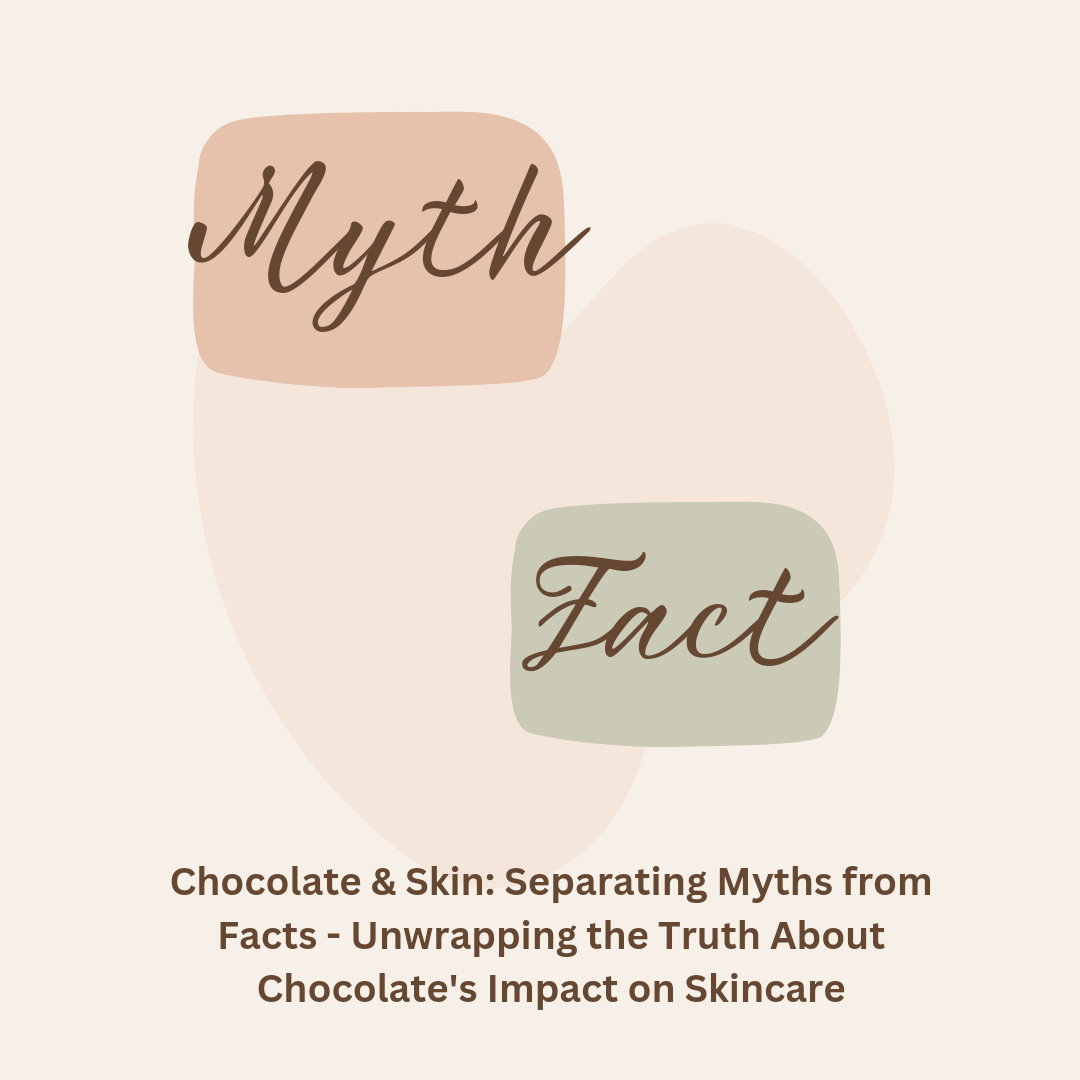
Chocolate & Skin: Separating Myths from Facts - Unwrapping the Truth About Chocolate's Impact on Skincare
Introduction: Decoding Chocolate's Role in Skin Health
Chocolate, often seen as a guilty pleasure, has been at the center of a longstanding debate in the skincare world. From myths about causing acne to claims of its antioxidant benefits, chocolate's relationship with our skin has been both celebrated and vilified. This article dives deep into these beliefs, seeking to separate fact from fiction and provide a clear understanding of how chocolate truly affects our skin.
The Chocolate-Acne Connection: Myth or Reality?
One of the most persistent beliefs is that chocolate leads to acne breakouts. To unravel this, we turn to scientific studies and dermatological expertise. Research has shown that acne is primarily caused by hormonal changes, bacteria, and inflammation. While diet can play a role, chocolate itself is not a direct trigger. However, high sugar and dairy content in certain chocolates can exacerbate existing acne conditions. It's crucial to differentiate between chocolate as a whole and the ingredients it often contains. Pure dark chocolate, with minimal additives, is less likely to impact skin negatively compared to its milkier, sweeter counterparts.
Nutritional Benefits of Chocolate for Skin
Moving beyond the acne debate, let's explore the skin benefits chocolate may offer. Dark chocolate, rich in antioxidants and flavonoids, can be a skin-friendly choice. These compounds are known for their ability to fight free radicals - unstable atoms that can cause cell damage, leading to premature aging. Flavonoids also improve blood flow to the skin, enhancing its appearance and health. This makes dark chocolate not just a treat for your taste buds, but potentially for your skin as well.
Chocolate and Skin Sensitivity: A Delicate Balance
For those with sensitive skin, chocolate can be a double-edged sword. While the antioxidants in dark chocolate can soothe and protect the skin, additives in some chocolate products like nuts, dairy, or artificial flavors can trigger allergies or irritation. It's crucial to understand your skin's specific needs and sensitivities. Opting for pure, high-quality dark chocolate with minimal additives can be a safer choice for sensitive skin types.
Debunking Popular Skincare Myths Related to Chocolate
Many skincare myths revolve around chocolate. One such myth is that chocolate makes your skin oily, leading to breakouts. However, there's no scientific evidence to back this claim. Another common belief is that chocolate accelerates aging. In contrast, the antioxidants in dark chocolate can actually help combat signs of aging. It's important to distinguish between myths and scientifically backed facts when considering chocolate's impact on your skin.
The Sugar Factor: Sweet Impact or Bitter Truth?
A critical aspect of chocolate's impact on skin is its sugar content. High sugar levels, especially in milk chocolate, can contribute to skin issues like inflammation and accelerated aging. The glycemic index of these sugary treats can lead to spikes in insulin, potentially worsening conditions like acne. In contrast, dark chocolate typically has lower sugar content, making it a better option for those concerned about sugar's skin effects. The key is to choose chocolates with a higher cocoa content and lower sugar levels to enjoy the benefits without the adverse effects.
Chocolate and Long-term Skin Health: A Lasting Relationship
The long-term effects of chocolate consumption on skin health are worth considering. Regular intake of dark chocolate, rich in flavonoids and antioxidants, can contribute positively to skin hydration and elasticity, thus aiding in the fight against skin aging. These benefits, however, are contingent on moderation and the type of chocolate consumed. Overindulgence, particularly in sugar-laden chocolates, can negate these positive effects. Therefore, a balanced approach to chocolate consumption is essential for maintaining healthy, youthful skin over time.
Conclusion: Finding Balance with Chocolate in Your Skincare Routine
In conclusion, while chocolate is not the skin villain it's often made out to be, it's also not a magical cure-all. The key lies in understanding the type of chocolate and its ingredients. Opting for dark chocolate with high cocoa content and minimal additives can offer benefits to your skin, while being mindful of the sugar content is crucial. Moderation and informed choices are your best allies in incorporating chocolate into a skin-healthy lifestyle.
Key Takeaways
- Chocolate-Acne Link: Chocolate itself doesn't cause acne, but high sugar and dairy content in some chocolates can exacerbate skin issues.
- Benefits of Dark Chocolate: Rich in antioxidants and flavonoids, dark chocolate can improve skin health by fighting free radicals and improving blood flow.
- Sensitive Skin Consideration: Choose high-quality dark chocolate with minimal additives to avoid skin irritation or allergies.
- Sugar Impact: Opt for dark chocolate with lower sugar content to avoid inflammation and potential skin aging effects.
- Moderation is Key: Balance is crucial in incorporating chocolate into your skincare routine, with a focus on type and quantity for long-term skin health benefits.

